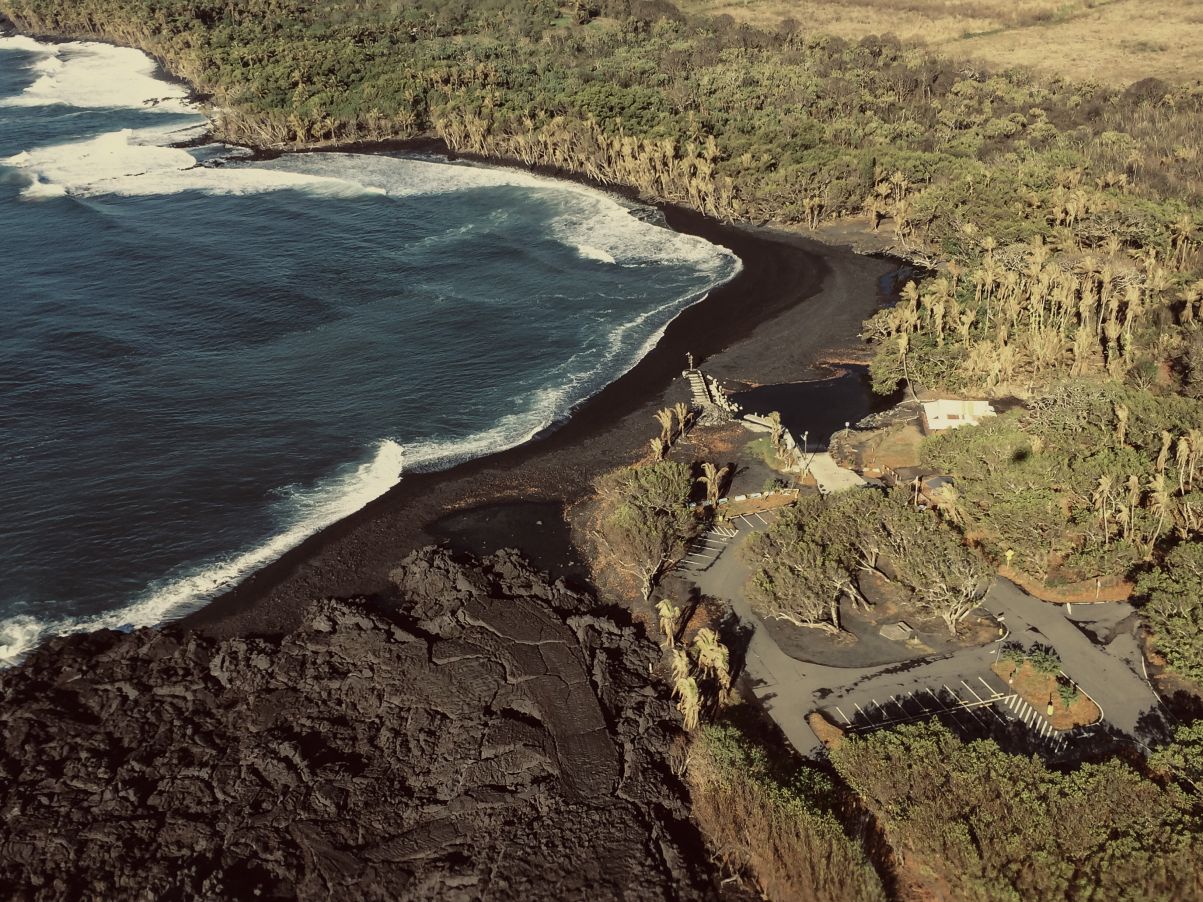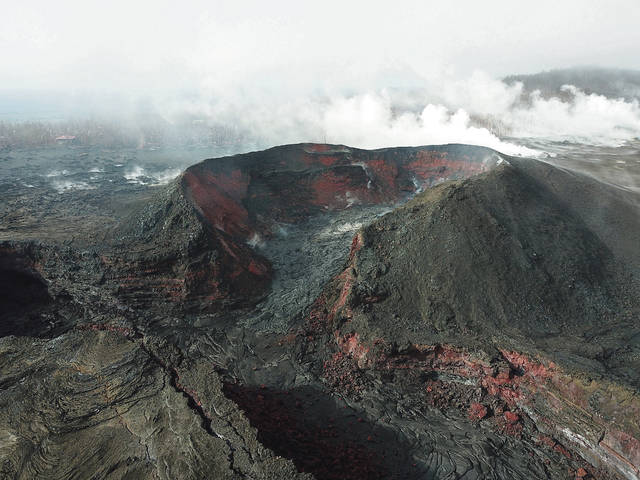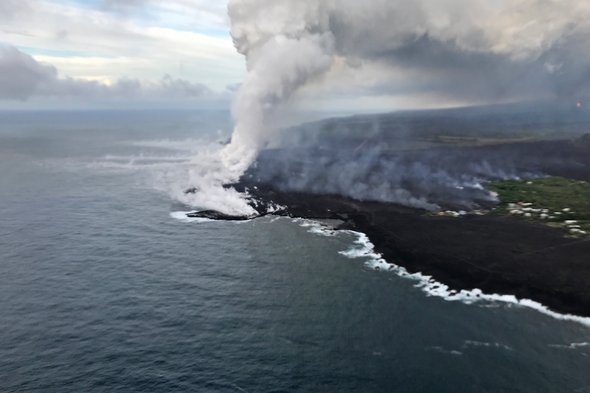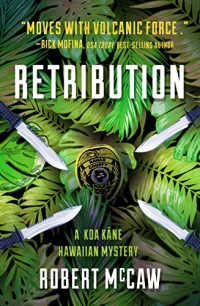Black Sand
There’s a New Black Sand Beach on the Big Island
Pele, the Hawaiian goddess of volcanic fire and fury, has given the Big Island of Hawaiʻi a new black sand beach at Pohoiki. This small miracle arose from vast destruction, like many events of volcanic origin.
Black sand beaches are beautiful, rare, and frequently short-lived. Lacking a natural base of sand and vulnerable to future lava flows, their longevity is tenuous at best. So the appearance of a new black sand beach is cause for celebration!

The black sand beach at Pohoiki. (Photo Courtesy USGS)
A little back story on this newly formed wonder . . . In May 2018, the Kīlauea volcano on the Big Island of Hawaii began a massive eruption. Concurrently, a 6.9 earthquake rocked the vicinity and triggered roughly 60,000 further earthquakes. The eruption became the largest and most significant in Kīlauea’s recorded history.
Over the next few months, Kīlauea spewed a billion cubic yards of lava over 13.7 square miles, spilling into the sea, and creating more than 875 acres of new land. Most of that magma came from the Halemaʻumaʻu crater inside Kīlauea’s caldera. After a series of explosive collapses, the floor of the caldera fell by more than 1600 feet.
The Jagger Volcano Observatory, perched on a nearby overlook, fell prey to the earthquakes and shifting ground and will likely not reopen to the public.
The eruption caused numerous fissures to appear in Leilani Gardens, a lovely Puna community, resulting in the destruction of over 700 dwellings, damage to a nearby geothermal plant, and the loss of many local flower farms.
Several spectacular phenomena occurred during the course of Kilauea’s 2018 eruption. Hot lava entering Green Lake, formerly the largest fresh water body on the Big Island, boiled away the whole body of water, and the Big Island lost one of its most spectacular swimming holes.
Lava making its way to the ocean filled in the strikingly beautiful Kapoho Bay. Most of the lava came from a single fissure and resulted in the buildup of a 180-foot tall cinder splatter cone. Controversy surrounds the possible naming of this new geographic feature, but that’s a story for a future blog post.

Cinder splatter cone at fissure number 8. (Photo Courtesy USGS)
It should come as no surprise that fresh lava and seawater do not mix well. When the hot red lava entered the ocean, it produced huge clouds of toxic laze—hydrochloric acid mixed particles of glass. Contact with the cold ocean also caused the lava to shatter into particles, many small enough to become black sand.

Laze arising as lava enters the sea. (Photo Courtesy USGS)
But, tiny particles of black lava alone to not make a beach. Tides, currents, wind, the topography of the coastline, and the shape of the ocean floor all must combine to create this natural wonder.
Although lava flowed into the sea along more than eight miles off the coastline, it was only at Pohoiki, at the southern end of the lava flow’s ocean entry, that conditions were ripe for the creation of a new black sand beach.
So it was that from the ferocity of Pele, Hawaii’s goddess of volcanic fire, emerged something quite beautiful and magical. As the Hawaiians say, this land belongs to Pele, and although she has the power to take away, wisely she also gives back.

